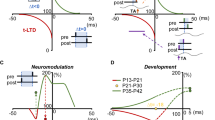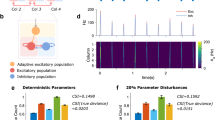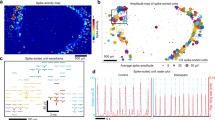Abstract
Electrophysiological connectivity patterns in cortex often show a few strong connections in a sea of weak connections. In some brain areas a large fraction of strong connections are bidirectional, in others they are mainly unidirectional. In order to explain these connectivity patterns, we use a model of Spike-Timing-Dependent Plasticity where synaptic changes depend on presynaptic spike arrival and the postsynaptic membrane potential. The model describes several nonlinear effects in STDP experiments, as well as the voltage dependence of plasticity under voltage clamp and classical paradigms of LTP/LTD induction. We show that in a simulated recurrent network of spiking neurons our plasticity rule leads not only to receptive field development, but also to connectivity patterns that reflect the neural code: for temporal coding paradigms strong connections are predominantly unidirectional, whereas they are bidirectional under rate coding. Thus variable connectivity patterns in the brain could reflect different coding principles across brain areas.
Similar content being viewed by others
Article PDF
Author information
Authors and Affiliations
Rights and permissions
About this article
Cite this article
Clopath, C., Büsing, L., Vasilaki, E. et al. Connectivity reflects coding: A model of voltage-based spike-timing-dependent-plasticity with homeostasis. Nat Prec (2009). https://doi.org/10.1038/npre.2009.3362.1
Received:
Accepted:
Published:
DOI: https://doi.org/10.1038/npre.2009.3362.1



